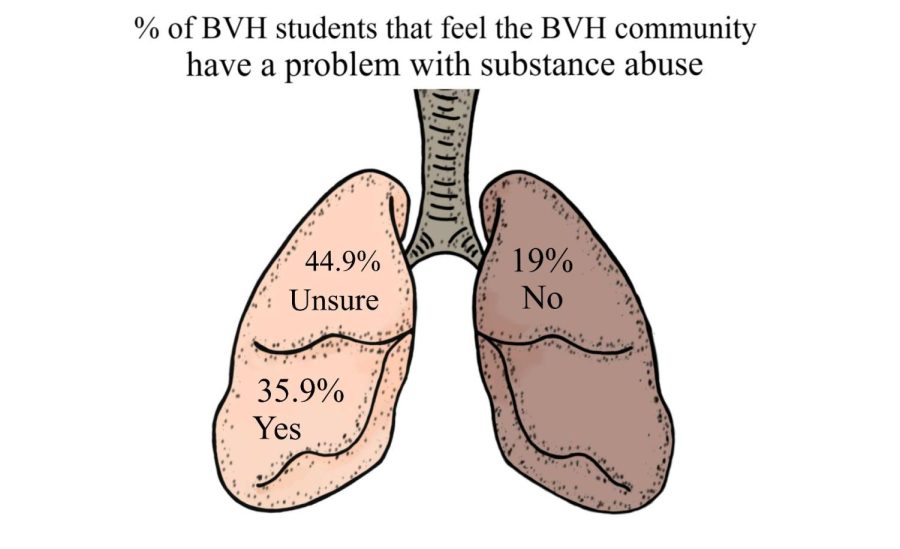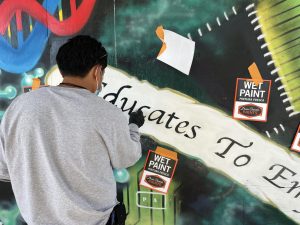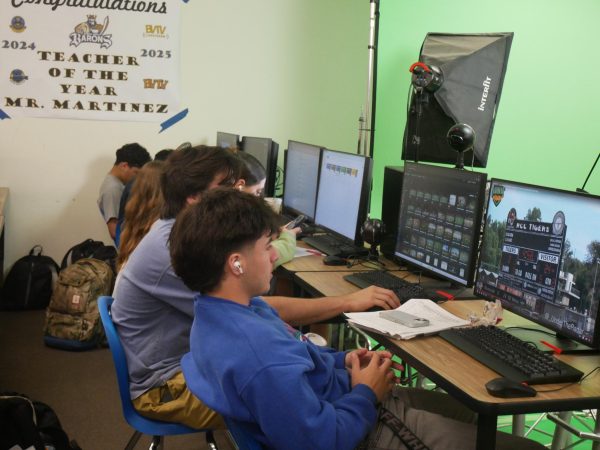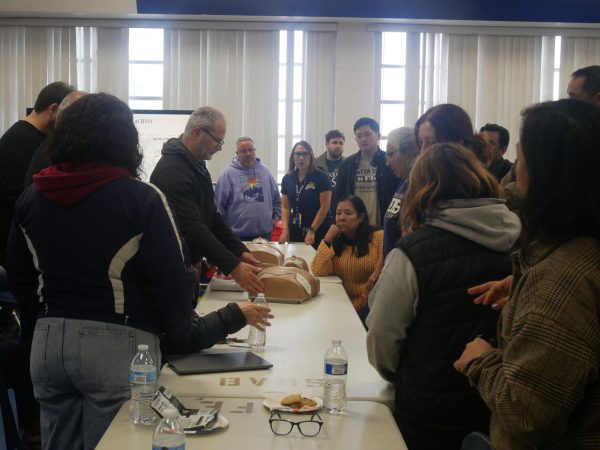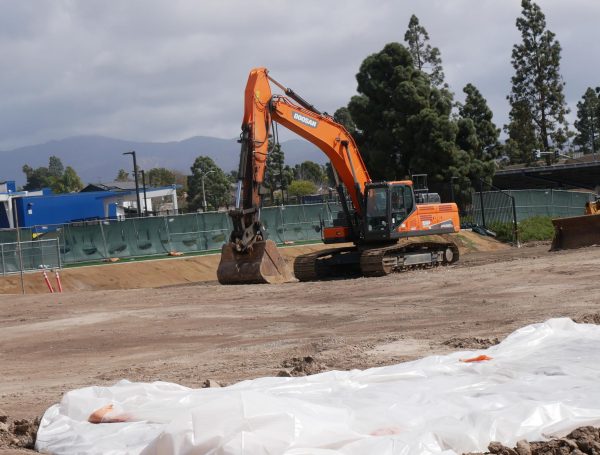A look into student drug use in BVH
The Crusader polled students and asked if they felt that the Bonita Vista High (BVH) community has a problem with substance abuse. A third of respondents felt that substance abuse is an issue at BVH
After students returned to in-person learning, there have been multiple instances where substances such as marijuana, non-prescribed medicines, nicotine and other drug-related products have been seen with students or confiscated at Bonita Vista High (BVH).
Autoshop teacher Jose Leyva sometimes catches students during school hours using non-medicinal drugs, most commonly “Stiiizys”; a San-Francisco-based cannabis company that produces cannabis products. Leyva also mentioned a specific instance where a student in his class overdosed on non-prescribed medication; the student had to be transported to a hospital.
“[Seeing students do drugs] makes me feel bad because you guys are super young. If you want to experiment, I don’t have issues, but there is definitely a time, a place and an age where you can go and kind of start to try those things or do whatever you want to do,” Leyva said.
For students like seniors Xavier Milan and Sylvanna Olivas, they have witnessed instances of students using drug-related products on campus, specifically at the school’s bathrooms. Other times, Milan and Olivas have seen students use drugs in the hallways during passing periods or in the locker rooms.
“Sometimes if you just go to the bathroom, you can definitely tell that somebody’s doing drugs from the smell or the smoke in there,” Milan said. “[Drugs] are not really worth it, you could theoretically be throwing your whole entire life away for reasons that are fairly insignificant. I would say [that] there’s no reason to rely on these substances.”
For Leyva, the COVID-19 pandemic has been a contributing factor to students resulting in the use of drugs at BVH. He stated that remote learning has been difficult for students and they were given a lot of time to find ways to “entertain themselves.”
“Distance learning was tough. I feel like a lot of people were really bored and might have fallen into using drugs during that time period,” Leyva said.
Olivas has learned how the use of drugs can have consequences on the human body. As a student-athlete in water polo, she makes sure her body is in prime condition to compete and practice. Her coach and teammates also make an effort to be healthy and share tips on leading an active lifestyle.
“Drugs can affect students academically because they damage the brain and how [students] learn,” Olivas said. “I hope that the [substance use] would decrease, not happen as much anymore and possibly be more regulated.”
According to Health Science teacher Shannon Bruce, based on the input of her students, the most common drugs used at BVH are nicotine and marijuana vape pens. Currently, Bruce started a drug counseling program where she studies how to be a drug addiction counselor and interventionist. Through the classes she takes from the program, she is able to learn more about the implications and health issues associated with vape and cannabis pens.
“Vape pens are concentrated forms of nicotine or cannabis. More and more people are seeking to go to rehabilitation because of the concentrations of cannabinoids that people are ingesting via these vape pens. It’s actually really scary,” Bruce said. “If you’re under the age of 25, the nicotine and cannabis vape pens cause an issue with the white matter of the brain [and] the older you get closer to the age of 25, the safer those products will be to use. The health consequences are going to be worse for the 15-year-old.”
Bruce described that the impacts of drugs on students’ health are detrimental to their overall learning. Based on the TEDed video she watched from the course she’s currently enrolled in, the impacts of marijuana negatively affect the brain’s functions.
“When you are negatively affecting the white matter of the brain, you are affecting your [ability to] learn, communicate and [your] impulsiveness—and those are all really important things for teenagers; they’re really dangerous,” Bruce said.
According to Leyva, there are procedures given to teachers who witness students using drugs on campus. He has no knowledge of any specific guidelines or protocols in place that teachers have to follow in an effort to keep students who use drugs on campus in check. However, Leyva assures that the BVH administration is doing its best in combating this issue.
“We’re [teachers] supposed to call the office and have [students] get picked up. Then, to my understanding, they get searched and other items get confiscated. They [office staff and administration] are being vigilant and making sure that [teachers] have eyes on everyone at all times. They respond quickly whenever we do have an issue; they make sure to get campus assistance out here, as quick as possible,” Leyva said.
In an effort to fight the issue of drugs on campus, both Leyva and Bruce emphasize the importance of seeking help. For students who struggle with the use of drugs, there are several resources and support systems available to them.
“There are tons of [help] hotlines and resources [provided] here at the school. There are counselors and teachers [students] could talk to. Really any adult on campus should be able to help with guidance and there are places where they can go to get additional help if it’s something that’s outside of our realm. There are lots of different places where people can get help,” Leyva said.
Moving forward, Bruce is hopeful of overcoming the issue of drug use at BVH. She mentioned that as things go back to normal after the COVID-19 pandemic, students become less prone to using harmful substances.
“Once we get a handle on COVID-19, I think that kids’ drug use will decrease because we’re able to offer so many more fun things on campus for them, like in the past. I really look forward to the day in which we go back to normal, where we gather and have fun together in real life. ” Bruce said. “I think that once we get past this big hurdle, drug use will go down because [students] are going to want to do different things.”

I am a senior at Bonita Vista High and a third year staff member on the Crusader. This year, I am co-Editor-in-Chief, and previously was Opinion Editor...
I am a junior at Bonita Vista High, and a second year staff member on the Crusader. I love being able to meet new people, and having conversations with...

Hello! I am a senior at Bonita Vista High and this is my first year as a member of The Crusader. This year I am one of the two photographers. I joined...

